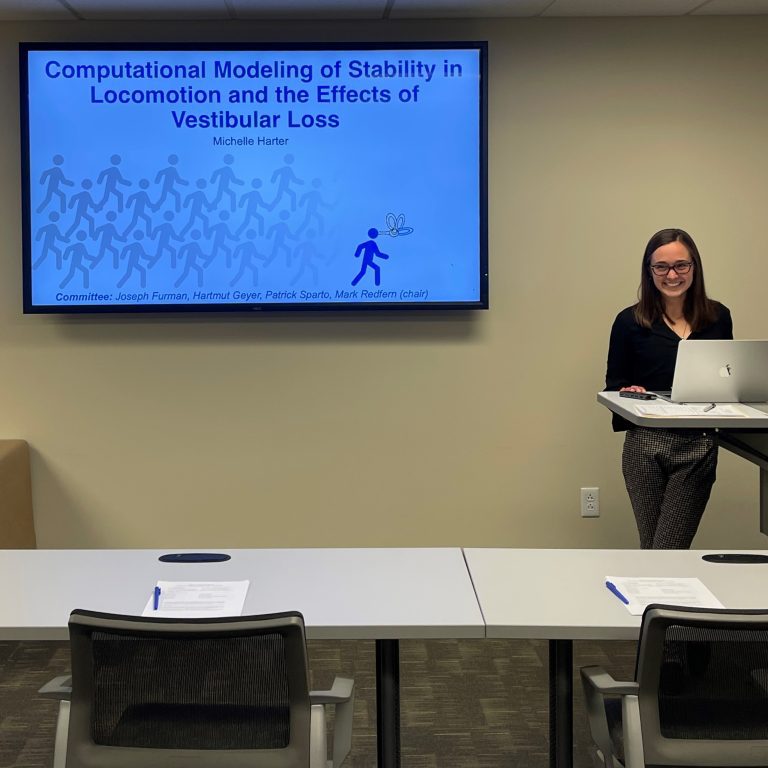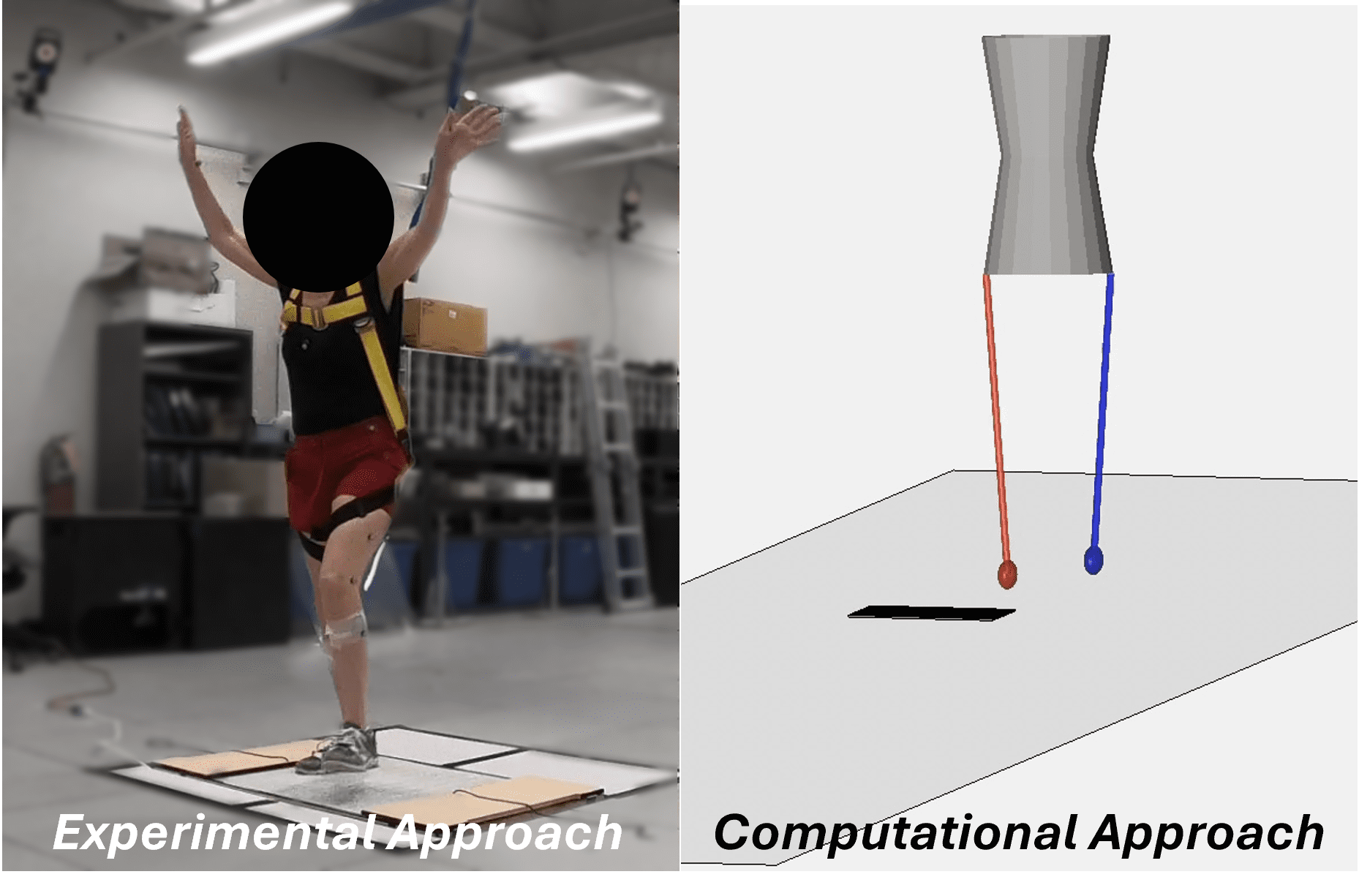
Graduate Student
Year Graduated: 2024
Michelle Harter
After HMBL
StreetLab at the Vision Institute

Michelle Harter successfully defended her dissertation entitled “Computational Modeling of Stability in Locomotion and the Effects of Vestibular Loss”!
Committee Chair was Mark Redfern and Committee Members included Joseph Furman, Hartmut Geyer, and Patrick Sparto.
See below for an abstract of her work.
The human body is unstable during walking and must be actively controlled. Four major strategies are used to maintain walking stability, including regulating foot placement, modulating lateral ankle roll, adjusting ankle push-off, and controlling trunk posture. These strategies use sensory feedback, including information from the vestibular system, vision, and somatosensation. Deficits in the vestibular system are associated with decreased walking stability and increased fall risk. This dissertation used experimental and computational techniques to gain a greater understanding of how and why walking stability is impacted by vestibular impairment in people with vestibular hypofunction (PwVH) to suggest effective rehabilitation efforts. Aim 1 recruited healthy control participants (HCs) and PwVH to evaluate how these cohorts used the four strategies to maintain stability while walking with underfoot perturbations. HCs showed decreased stability following medial perturbations accompanied by decreased step width, increased ankle inversion, increased ankle push-off, and increased rightward trunk sway, with generally opposite changes for lateral perturbations. PwVH showed similar behavior; however, the response magnitudes were dependent on the side of the vestibular lesion and level of functional compensation. PwVH were more destabilized and had less effective trunk responses when perturbations caused acceleration toward the lesion. Additionally, poorly compensated PwVH were more unstable, showed exaggerated trunk and ankle responses, and walked slower. This aim highlighted the biomechanical differences associated with poorer stability in PwVH. Aim 2 developed a computational model of human walking to understand why PwVH show poor gait stability and suggest mechanisms to improve stability. The model incorporated all stabilization strategies and responded to perturbations similarly to humans. Simulation results showed that exaggerated trunk sway can be attributed to vestibular loss, but poor stability is rather caused by PwVH walking more slowly. Normal trunk sway could be restored by reducing reliance on inaccurate vestibular input and increasing reliance on somatosensation. Stability could be improved by increasing step width. Together, these findings show how walking stability and stabilization strategies are affected in PwVH, why these differences arise, and how these impairments may be addressed through rehabilitation that modifies sensory reliance, walking speed, and the use of stabilization strategies.

People

Graduate Student
Year Graduated: 2024
Michelle Harter
After HMBL
StreetLab at the Vision Institute


Affiliate
Professor of Otolaryngology, Neurology, Physical Therapy and Bioengineering

Affiliate
Vice Chair for Faculty Affairs, Department of Physical Therapy
Co-Director and Professor
Research

2021